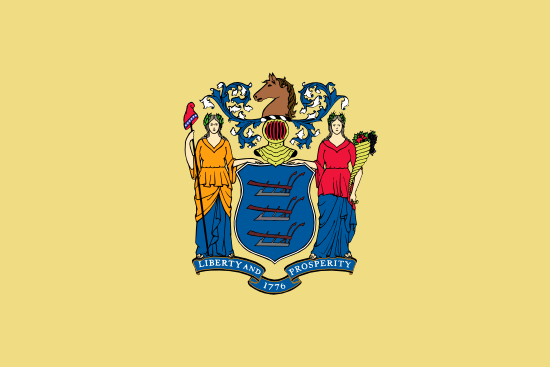
New Jersey
- Statehood Year:
- 1787
- Capital:
- Trenton
- Largest Cities:
- Newark, Jersey City, Paterson
- Abbreviation:
- NJ
New Jersey is a state in the Northeast region of the United States, known for the Jersey Shore, Pine Barrens, and dense suburbs. It has a population of 9,622,060, making it the 11th most populated state in the country. The capital city is Trenton. New Jersey has a pharmaceutical and financial hub with diverse industries.